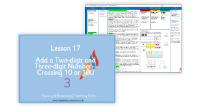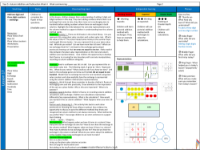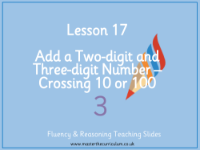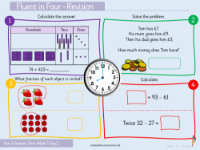Addition and subtraction - Add a two-digit and three-digit number crossing 10 or 100 - Worksheet
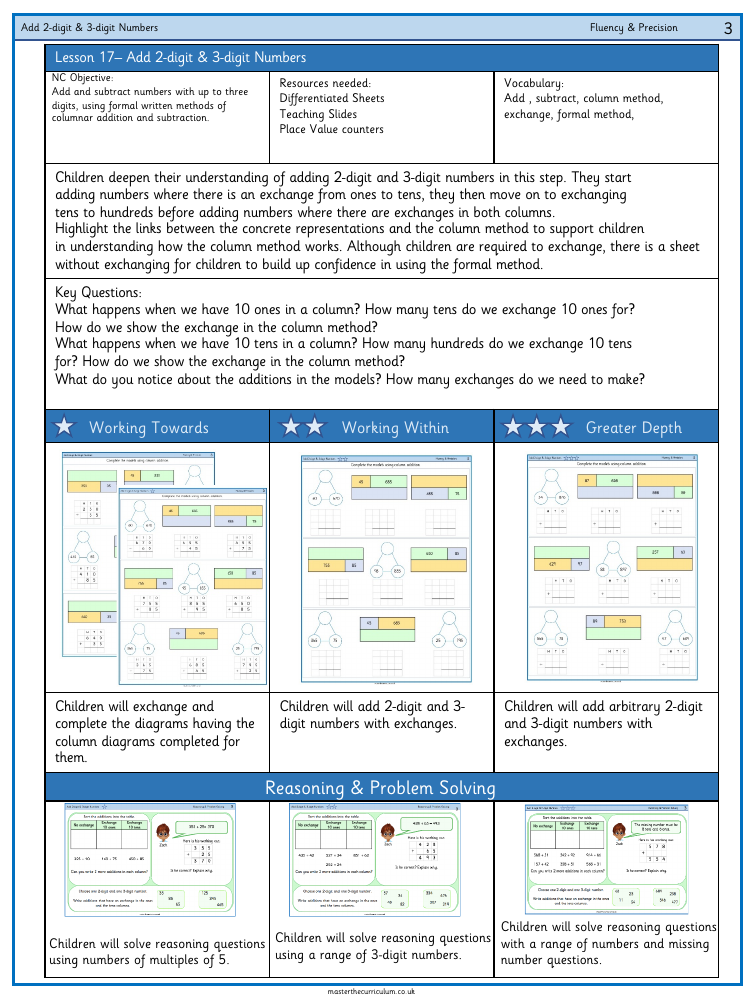
Maths Resource Description
In this comprehensive lesson, Year 6 students enhance their skills in adding two-digit and three-digit numbers, especially focusing on the process of carrying over, known as 'exchanging', when sums exceed 10 or 100. The National Curriculum objective is to add and subtract numbers with up to three digits using the formal written methods of columnar addition and subtraction. To aid learning, resources such as differentiated worksheets, teaching slides, and place value counters are employed. The vocabulary for the lesson includes terms such as 'add', 'subtract', 'column method', 'exchange', and 'formal method'. Through a series of activities, students practice adding numbers which involve exchanging from the ones to the tens column and from the tens to the hundreds column. They also learn to correlate concrete representations with the abstract column method, starting with examples that don't require exchanging to build confidence before moving on to more complex problems.
Students are encouraged to think critically about the addition process, with key questions guiding them to understand the necessity and method of exchanging in column addition. For instance, they explore what occurs when there are 10 ones or 10 tens in a column and how that exchange is represented in the formal method. To ensure a deeper understanding, reasoning and problem-solving activities are integrated into the lesson, where students solve questions using numbers that are multiples of five, a range of three-digit numbers, and tackle missing number questions. These exercises not only solidify their computational skills but also enhance their conceptual grasp of the exchange process in addition, preparing them for more advanced mathematical concepts.
